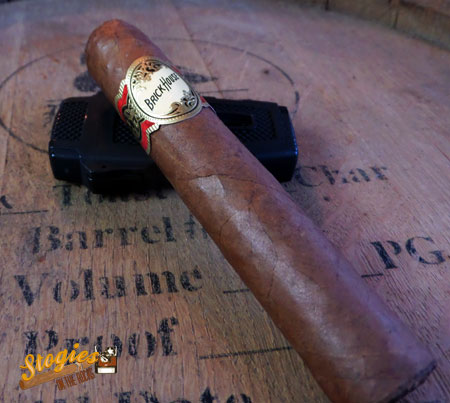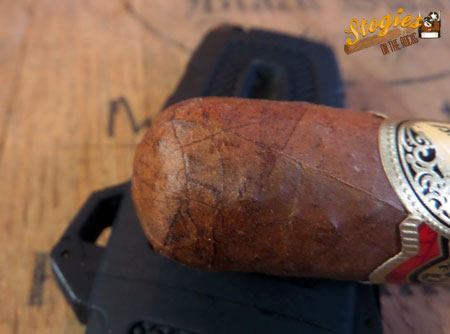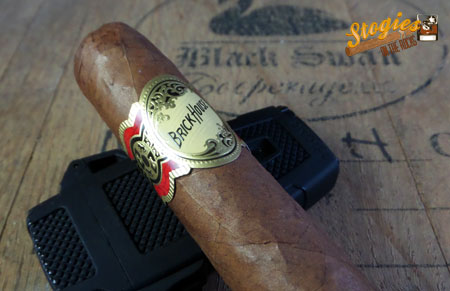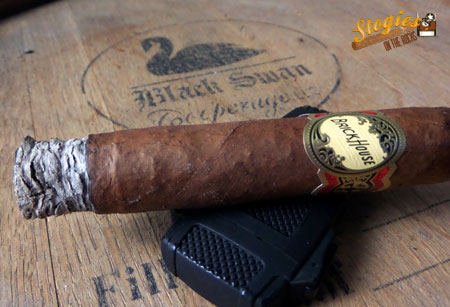Initial Thoughts
One thing that I love about most cigar brands is that they tend to come up with great stories that tell you about the origins of the brand or company. J.C. Newman has done a great job telling the story behind the Brick House line of cigars. This was one of the first cigars that I really started getting into back when I first started smoking. It was really enjoyable and only $5 so I figured why should I ever stop smoking these things? The truth is, I haven’t, they’ve been a staple in my humidor ever since.
A little bit of history behind the Brick House name is that this cigar started out as a Cuban puro back in 1937. Now after the Cuban embargo this cigar obviously couldn’t continue to be made. That is until 70 years later when the grandsons re-launched the brand. Since they couldn’t use Cuban leaf. They decided to make a Nicaraguan puro. Using a special Havana Subido™ leaf.
Originally J.C. Newman created the label based on his childhood home back in Hungary. According to the story, his family had the only brick house in the village and others would come and gather at night to eat, drink and enjoy each other’s company. You can see a modeling of the house on the inside of the box that these cigars come in.
The Brick House comes in 6 vitolas, Mighty Mighty 6 1/4″ x 60, Short Torp 5 1/2″ x 52, Churchill, Toro, Robusto, and Corona Larga 6 1/4″ x 46. The size I’m smoking for this review is the Toro vitola. Let’s hop into the review and see what it has to offer.
Looks
If you’re just looking at the label of this cigar you’re going to miss quite a bit. As I already mentioned the box has quite a detail to it that should be taken in, especially if you know the backstory. The Brick House has only 1 band on this cigar. It’s a blend of gold, black, red and cream colors. Going diagonal from the bottom left to the top right is the name ‘Brick House’. Alongside that are lots of gold swirls moving throughout the label. Nothing too crazy, just a simple stated name across the band.
Looking at the barrel of the cigar you can notice some very shiny spots where the oils are seeping out from that Havana Subido™ leaf. It shows itself as a nice dark brown slightly darker than the Colorado shade. This cigar has very minimal veins, but great detail to the leaf as a whole. It’s a great looking cigar and I’m about ready to set it aflame.
Function
Busting out the ole capped back cutter I made quick work of the head of this Brick House Toro. I tested the dry draw and it was a little stiff and difficult to get some air through. I’m not too worried though. I’ve smoked a lot of these cigars and haven’t had a draw or burn issue that I can remember.
The foot appears to be well packed. It’s interesting to see the mix of tobaccos in the foot. There is a darker ring and a lighter ring of tobacco mixed in there. I’m not sure if the cigar is somewhat wet do to over humidification or what. I won’t be able to tell until we put some fire to it!
Smoking
Speaking of which, let’s do that! As I suspected, once fire got involved the draw opened right up. Puffing on the cigar it just began burning straight and getting some nice smoke off it as well. Couldn’t ask for a better smoke. The smoke is lighter and doesn’t stay around too long but it does offer some nice aromas. It’s a nice change of pace from what my garage usually offers in terms of aromas.
From the first third to the final third I never had an issue. I would hold the ash anywhere from 1″ to 1 1/2″ depending on how flaky it looked. Unfortunately it always seemed to fall off when it was picture time. Still a great smoking experience from this cigar.
Flavor
Now it’s time to talk about the good stuff! On the pre light I picked up a strong note of hay. There was some molasses as well. On the dry draw I got sense of wet tobacco. Remember how I said the foot looked a little damp? I guess that was the issue. It didn’t cause any burn issues though and it cleared up as soon as the flame came to it. The backing note was one of pepper on the cold draw as well.
The first third brought out a nice combination of char with hickory backing it and a roasted nuts flavor. These two flavors seem to combine and work really well with each other.
The 2nd third of the Brick House Toro delivered some hints of honey. That tiny bit of sweetness adds a good bit of depth and character overall to the cigar. There are still the overtones of nutty flavors, but that honey adds so much to it. I’m loving it right now.
Throughout the final third not much changed. The sweet notes were still there backed up with the nutty notes. Really enjoyed those flavors as a whole.
I’ve smoked quite a few of these and never really taken detailed notes on it before. So it’s always fun to break down what you’ve experienced so many times and try to analyze what’s going on with it.
I put this Brick House Toro at a solid medium bodied cigar. There is some strength in there, but nothing that’s going to curl you over. Honestly I think this cigar can be smoked at darn near anytime of the day. I know it’s goes great with coffee in the AM. Great afternoon / golf course smoke and it’d be a great after dinner stogie as well.
Would I Buy It Again?
Um, yeah.
Is It an Every Day Smoke?
Certainly.
Would I Buy a Box?
I already have!
Conclusion
This Brick House Toro is just a wonderful smoke. At $5 it’s too good to pass up. If you haven’t given it a chance yet then you’re definitely missing out. Give it a try, if you don’t like it, you’re only out $5, it’s hard to argue against that!










